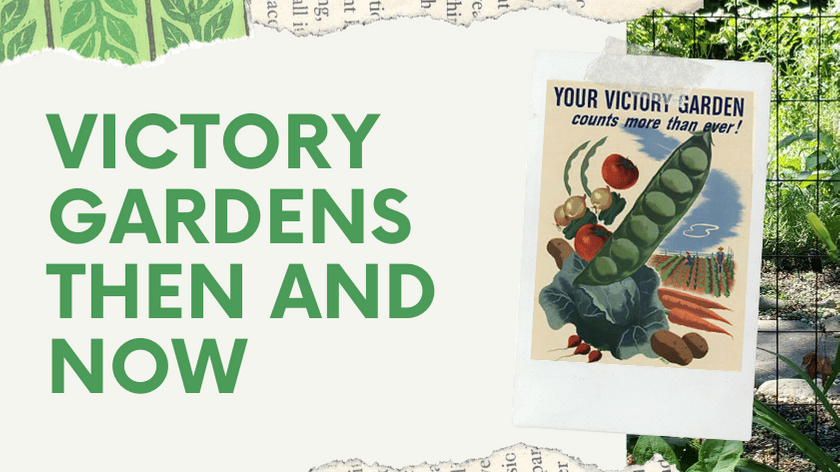 Written by: Allison Zafiratos
Written by: Allison Zafiratos
With the opening of HEPL’s Seed Library this past March, I began wondering how these seeds would be used in our community and home gardens. It reminded me of times in our shared past when we have come together to grow food for ourselves and our communities, times of disruption when every American faced challenging circumstances.
I’ve been grateful to be able to start seeds at home, have friends drop off un-needed seedlings and now have tomatoes, peppers, kale and herbs to enjoy every day without having to walk into a store. I don’t know if this qualifies as a “victory garden” but it does bring joy to me during this difficult time.
In the past, victory gardens or “war gardens” were vegetable, fruit, and herb gardens that supplemented rations during WWI and WWII. The United States wasn’t the only country to have victory gardens; the United Kingdom, Canadian and Australian governments all encouraged people to plant victory gardens in hopes of boosting morale as well as supplying fresh food when it was in short supply.
 Here in Indiana, victory gardens were a part of daily life. Our own George A. Ball, President of the Ball Company in Muncie, was a Trustee for the National Victory Garden Institute, which functioned from 1942-1946.
Here in Indiana, victory gardens were a part of daily life. Our own George A. Ball, President of the Ball Company in Muncie, was a Trustee for the National Victory Garden Institute, which functioned from 1942-1946.
This article, from the April 14th, 1945 edition of the Noblesville Ledger, was printed three weeks before the end of the war in Europe. It was the beginning of planting season in Indiana and local residents were encouraged to start a Victory Garden “even if it is no more than a 2×4 spot in the backyard”.
When the war in Europe had ended, this article from the July 12th, 1945 edition of the Noblesville Ledger highlighted the Victory Gardens of our local Firestone employees. Residents were reminded that “the need for Victory Garden products is greater than ever….The world’s food shortage is so acute that ample food for all will not be available for a year or two after the war in the Pacific ends.”
 Do you want to “pick up a shovel and build your own victory garden?” Here’s some help from the Chicago Botanical Gardens.
Do you want to “pick up a shovel and build your own victory garden?” Here’s some help from the Chicago Botanical Gardens.
Do you want to talk with other gardeners about their victory gardens and “build resilience through growing food”? Check out this blog.
To check out a book about Victory Gardens – fact or fiction – from our library or to download an Ebook free with your library card, search our online library catalog for Victory Garden. Options include The Victory Garden by Gail Foster who asks, “Could the victory gardens of World War 2 provide inspiration for our suburban plot?” or The Pollinator Victory Garden by Kim Eierman also downloadable as an Ebook.
And if you’re a gardener, don’t forget to tag us on social media at #HEPLGrowers!
